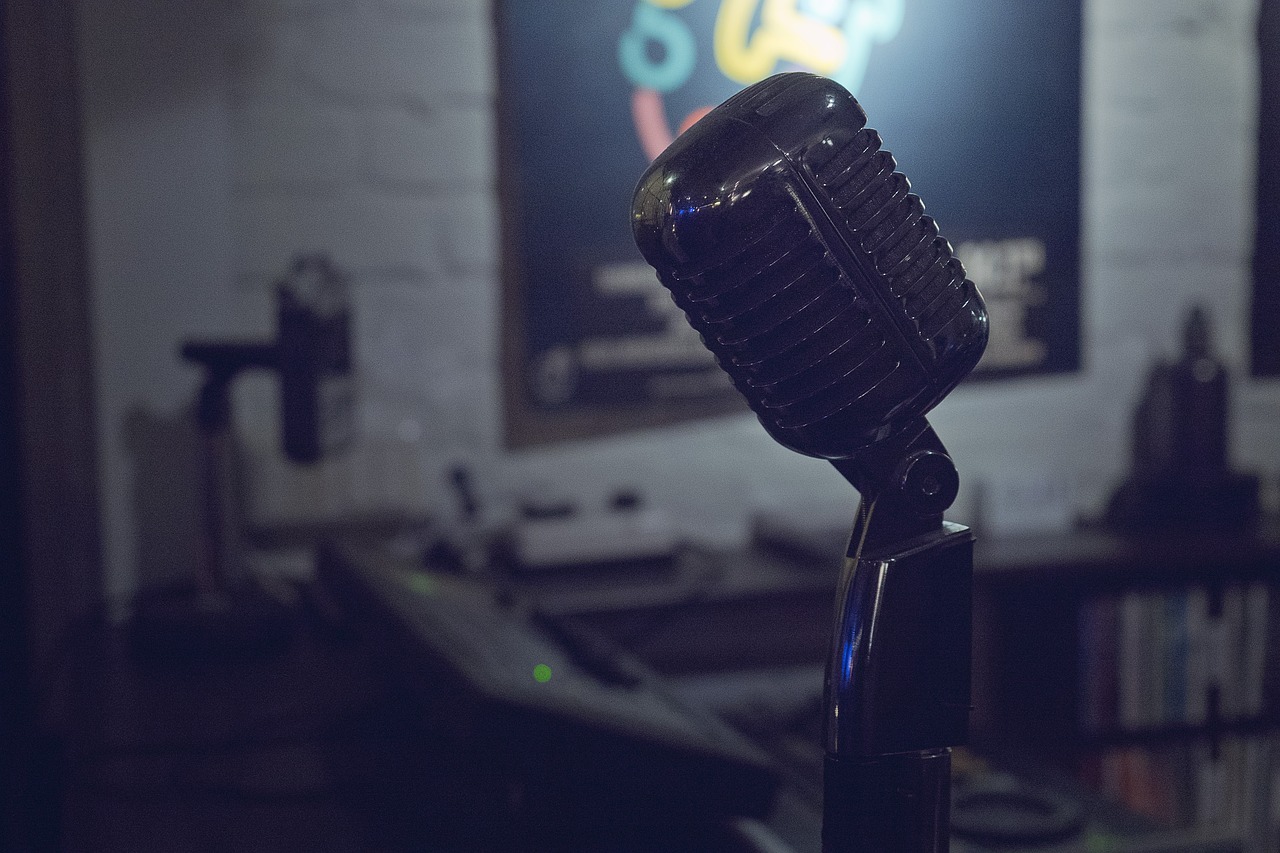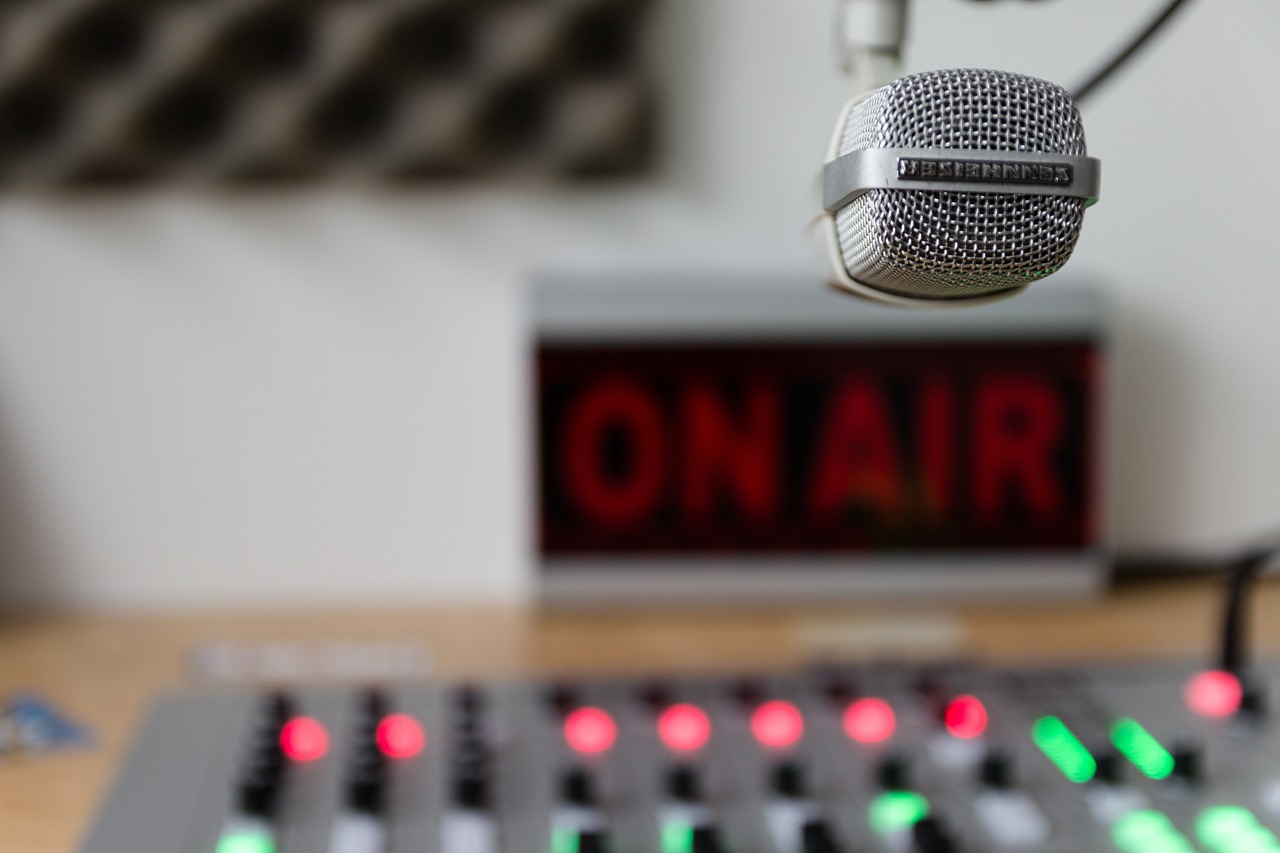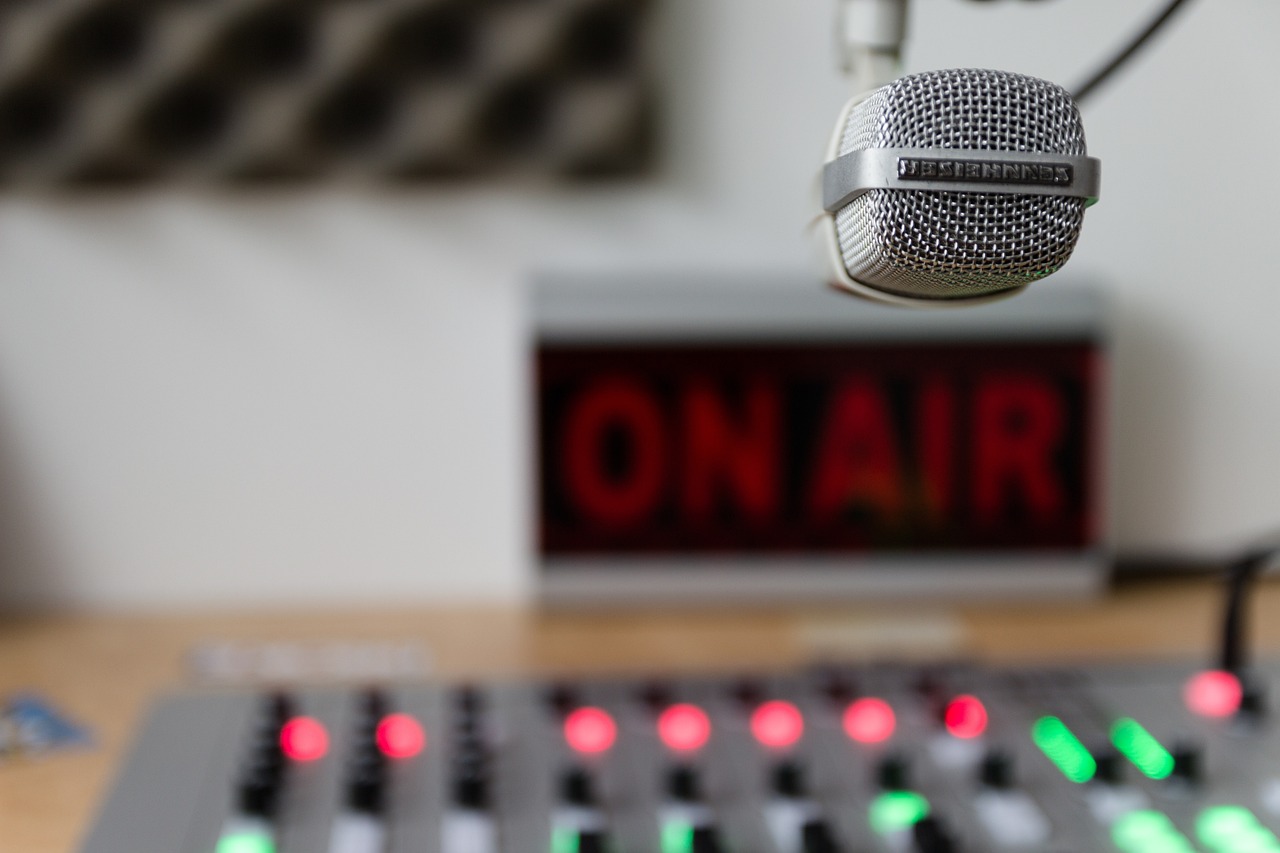If you’re a podcast enthusiast or involved in podcasting, you may have come across the age-old debate: Is omnidirectional better than cardioid? This article aims to shed light on this discussion by exploring the nuances of both microphone types and how they impact podcast interviews. Whether you’re an aspiring podcaster or simply curious about the world of podcasting, understanding the differences between these two microphone patterns will help you make an informed decision for your next recording. So let’s dive in and uncover the pros and cons of omnidirectional and cardioid microphones to find out which one reigns supreme in the podcasting world.

Understanding Microphone Basics
Definition of a microphone
A microphone is an essential tool used to convert sound waves into electrical signals. It is a device that captures audio and converts it into a format that can be recorded, amplified, or transmitted. In other words, it acts as the ears of a recording setup, allowing you to capture and communicate sound effectively.
How microphones work
Microphones work based on the principle of transduction. They contain a diaphragm that vibrates when exposed to sound waves. These vibrations are then converted into electrical signals, which can be further processed or recorded. The key components of a microphone include the diaphragm, the pickup element, and the output connector.
Types of microphones
There are various types of microphones available, each designed for specific applications. The three most common types include dynamic microphones, condenser microphones, and ribbon microphones. Each type has its own unique features, advantages, and limitations, making it important to choose the right microphone for your specific needs.
Exploring Cardioid Microphones
Definition of cardioid microphones
A cardioid microphone is a type of directional microphone that is designed to pick up sound primarily from the front and reject or minimize sound from the sides and rear. The name “cardioid” refers to the heart-shaped polar pattern that characterizes these microphones. This pattern allows for focused sound capture and excellent noise rejection, making cardioid microphones popular in various applications.
How cardioid microphones work
Cardioid microphones achieve their directional sensitivity through the use of a front-facing diaphragm, as well as various acoustic principles. The diaphragm captures sound waves from the front, while sound waves from other directions arrive at the microphone with a slight delay or phase difference. This phase difference creates cancellation, resulting in a predominantly forward-focused audio capture.
Uses of cardioid microphones
Cardioid microphones are widely used in various professional audio settings. They are commonly used in live performances, broadcasting, studio recording, and podcasting. Due to their ability to reject background noise and focus on the desired sound source, cardioid microphones are ideal for capturing vocals, instruments, and other sounds in environments where minimizing unwanted noise is crucial.
Exploring Omnidirectional Microphones
Definition of omnidirectional microphones
An omnidirectional microphone is a type of microphone that is designed to capture sound equally from all directions. Unlike cardioid microphones, which have a heart-shaped pickup pattern, omnidirectional microphones have a spherical or circular polar pattern. This means they can collect sound from all around, making them ideal for capturing ambient sounds or group recordings.
How omnidirectional microphones work
Omnidirectional microphones utilize a diaphragm that responds equally to sound waves arriving from any direction. They do not exhibit the same phase cancellation mechanism seen in cardioid microphones. Instead, they capture sound waves from all angles and transmit them as electrical signals, providing a true representation of the surrounding acoustic environment.
Uses of omnidirectional microphones
Omnidirectional microphones find their applications in various scenarios where capturing a broader audio perspective is desired. They are commonly used in field recordings, conference recordings, choir recordings, and natural sound capturings. With their ability to pick up sound from all directions, omnidirectional microphones excel in capturing room ambience, multiple speakers, and a more immersive listening experience.
Audio Quality Comparison: Cardioid vs Omnidirectional
Sound pick-up patterns
The primary difference between cardioid and omnidirectional microphones is their sound pick-up patterns. Cardioid microphones focus on capturing sound from the front while minimizing audio from the sides and rear. On the other hand, omnidirectional microphones capture sound equally from all directions. This pattern difference significantly impacts the audio quality and the intended use of each microphone type.
Noise and background interference
Cardioid microphones excel at rejecting unwanted background noise due to their directional sensitivity. They can provide a higher signal-to-noise ratio by isolating the desired sound source from any surrounding distractions. Omnidirectional microphones, however, capture sound from all directions and have less noise rejection capability. They are more suitable for scenarios where capturing a broader soundscape is important, even if it means recording some background noise.
Clarity and richness of audio
When it comes to capturing sound with clarity and richness, the choice between cardioid and omnidirectional microphones depends on the specific application. Cardioid microphones are often preferred for vocal recordings or capturing individual instruments, as they offer focused audio capture and excellent off-axis rejection. Omnidirectional microphones, on the other hand, provide a more natural and spacious sound representation, making them well-suited for ambient recording or capturing multiple sources simultaneously.

Podcasting with Cardioid Microphones
Advantages of cardioid microphones for podcasting
Cardioid microphones are widely used in podcasting due to their ability to isolate the host’s voice and reject background noise. They excel at capturing clear and focused audio, creating a more professional and immersive listening experience. Additionally, their directional sensitivity allows for better control over the captured sound, resulting in a cleaner and more intelligible podcast episode.
Common issues and how to overcome
While cardioid microphones offer many advantages for podcasting, there are some common issues that may arise. One of the main concerns is proximity effect, which occurs when the host gets too close to the microphone, resulting in a bass-heavy sound. This can be mitigated by maintaining an optimal distance from the microphone and using techniques such as pop filters or foam windscreens to reduce plosive sounds.
Popular cardioid microphones among podcasters
There are several popular cardioid microphones that have gained recognition among podcasters. The Shure SM58 is a legendary dynamic cardioid microphone known for its durability and warm sound. The Audio-Technica ATR2100x is another popular choice, offering both USB and XLR connectivity options. Other notable cardioid microphones include the Rode PodMic, Electro-Voice RE320, and the Blue Yeti.
Podcasting with Omnidirectional Microphones
Advantages of omnidirectional microphones for podcasting
Omnidirectional microphones bring a different set of advantages to podcasting. They are particularly useful for recordings involving multiple hosts or group discussions, as they capture sound from all directions equally. This ensures that everyone’s voice is picked up with equal importance, creating a balanced representation of the conversation. omnidirectional microphones are also great for capturing room ambience, giving the listener a more immersive experience.
Common issues and how to overcome
While omnidirectional microphones have their benefits, there are some common issues that may need to be addressed. One concern is the increased susceptibility to background noise and room acoustics. To overcome this, it is important to choose a quiet recording environment and make use of noise reduction techniques during the editing process. Additionally, properly positioning the microphone and adjusting the gain levels can help in achieving the desired audio quality.
Popular omnidirectional microphones among podcasters
Among the popular omnidirectional microphones, the Audio-Technica ATR2100x stands out as a versatile and budget-friendly option for podcasting. The Blue Yeti is another widely recognized choice, offering selectable polar patterns including omnidirectional. For those seeking a high-quality studio-grade option, the Neumann U87 is often regarded as a top choice, delivering exceptional sound capture and accuracy.

Conducting Podcast Interviews with Both Types of Microphones
Solo interviews versus group interviews
When conducting podcast interviews, the choice between cardioid and omnidirectional microphones depends on the interview setting. For solo interviews, cardioid microphones are often preferred as they emphasize the host’s voice and minimize any distractions from the surroundings. In group interviews or roundtable discussions, however, omnidirectional microphones are more suitable as they capture multiple voices and maintain a balanced representation of the conversation.
Acoustic considerations
Acoustic considerations play a crucial role when using different types of microphones for podcast interviews. Cardioid microphones require a quieter environment to achieve optimal results, as they focus on capturing sound primarily from the front. On the other hand, omnidirectional microphones are more forgiving in terms of room acoustics and background noise. However, for both types of microphones, it is important to find a suitable location and address any potential acoustic issues to ensure clear and natural-sounding recordings.
Choice of microphone depending on interview setting
The choice of microphone for podcast interviews depends on the specific requirements of each interview setting. If the focus is on having a more intimate and controlled conversation, a cardioid microphone is typically the preferred option. However, if the goal is to capture the dynamics of a group discussion or provide a sense of space, an omnidirectional microphone may be more appropriate. Ultimately, considering the goals and dynamics of each interview will guide the decision-making process.
Editing Podcasts: Does Microphone Type Matter?
Impact of microphone choice on editing process
The choice of microphone can have an impact on the editing process of podcasts. Depending on the microphone type, there may be variations in audio quality, background noise levels, and overall sound characteristics. These differences can influence the editing decisions, such as adjusting volume levels, applying noise reduction techniques, or enhancing the audio through equalization or compression.
How to handle different audio qualities in editing
When dealing with different audio qualities resulting from microphone choices, it is important to understand the strengths and limitations of each microphone type. For cardioid microphones, focus on enhancing clarity and reducing unwanted noise. With omnidirectional microphones, consider preserving the ambient sound and maintaining a balanced mix between speakers. Applying noise reduction, equalization, and other audio enhancements should be done judiciously to maintain a natural and pleasing sound.
Effects of noise reduction and audio enhancements
Noise reduction and audio enhancements should be approached with caution to avoid compromising the integrity of the original recording. Excessive noise reduction can lead to artifacts and unnatural sound. When applying audio enhancements such as equalization or compression, it is crucial to listen critically and make adjustments that enhance the overall listening experience while preserving the authenticity and intention of the recorded content.

Sorting Through Misconceptions: Omnidirectional vs Cardioid Debate
Common misconceptions about omnidirectional microphones
One common misconception about omnidirectional microphones is that they are inferior to cardioid microphones in terms of sound quality. While omnidirectional microphones may capture more ambient sound, they can deliver equally excellent audio reproduction when used in appropriate settings. The key is understanding the intended use and taking advantage of the unique capabilities omnidirectional microphones offer.
Common misconceptions about cardioid microphones
Similarly, there are misconceptions regarding cardioid microphones. Some believe that cardioid microphones are always the best choice for any recording situation. While they excel in many scenarios, it is important to recognize that their directional nature may not always be ideal. Each microphone type has its strengths and weaknesses, and choosing the right microphone requires careful consideration of the specific requirements and environment.
Facts versus fiction in the debate
It is essential to separate facts from fiction when comparing omnidirectional and cardioid microphones. Both microphone types have their rightful place and can deliver exceptional results when used correctly. The choice between them should be based on the intended application, desired audio characteristics, and the specific advantages each type brings to the table. It is crucial to dispel misconceptions and instead focus on understanding the capabilities and limitations of each microphone, allowing for informed decision-making.
Final Thoughts: Is Omnidirectional Better Than Cardioid?
Dependence on individual needs and preferences
Determining whether omnidirectional or cardioid microphones are better depends entirely on individual needs and preferences. Both microphone types have their strengths and applications, and the choice ultimately comes down to the specific recording requirements. One should consider factors such as desired sound capture, background noise levels, budget constraints, and personal preferences in terms of audio characteristics.
Considering the whole picture: cost, quality, and ease of use
When making a decision between omnidirectional and cardioid microphones, considering the whole picture is vital. This includes evaluating the cost, audio quality, and ease of use of each microphone type. While cardioid microphones may excel in noise rejection and focused audio capture, omnidirectional microphones offer a more immersive and natural sound. Assessing the requirements and trade-offs associated with each microphone type enables a more informed decision-making process.
Final verdict based on expert opinions
Ultimately, the final verdict on whether omnidirectional or cardioid microphones are better is subjective and depends on the specific application. Experts in the field have their preferences based on experience and specific needs, but there is no definitive answer that applies universally. It is important to consult trusted sources, try different microphone types, and make an informed decision based on your own unique needs and goals for audio capture.

